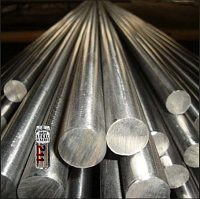(Total Views: 297)
Posted On: 04/18/2022 8:20:17 PM
Post# of 128950

What Is Onion Snow?
"Onion snow" is a regional term used primarily in the state of Pennsylvania, referring colloquially to the final snowfall before the end of the spring season. Some sources indicate that the onion snow typically occurs after the traditional time for planting onions. In most places, onions are planted in late March or early April. Onion snow is defined as a light snow that melts quickly. This regional expression is said to originate from Pennsylvania Dutch culture and language.
Three snow-related expressions, including onion snow, are unique to Pennsylvania Dutch culture. A sapling-bender refers to a wet and heavy snow that weighs down tree limbs, while a crack-stuffer is the term for a dry fine-grained snow that settles into cracks. Legend holds that all three types of snow must occur before spring has arrived.
In addition to onion snow, crack-stuffers, and sapling-benders, other weather expressions have arisen from the Pennsylvania Dutch dialect. A storm could be referred to as a herschel. The expression "dooner und blitzen" means a thunderstorm with lightning. Individuals with a Pennsylvania Dutch heritage could refer to a rain drizzle as spritzing. Likewise, an inquiry about the likelihood of rain might be phrased as "Make wet?"
Much of the weather lore of rural areas in Pennsylvania is also due to the influence of the Pennsylvania Dutch culture. This folklore holds that the weather occurring on any month's fifth day is a predictor of the weather for the entire month. Overactive behavior by children is said to be a sign that rain is imminent, according to these beliefs; rain is similarly said to be on its way if morning fields contain many cobwebs. In the same vein, a crowing rooster in late evening predicts rainfall overnight. A cold winter is believed to be foretold by the plumpness of corn as it grows, and it is said to be warm enough for corn planting when women are seen sticking one of their legs out from beneath the bedcovers.
The term "Pennsylvania Dutch," sometimes called "Pennsylvania German," refers to a cultural group of German heritage, based on a misunderstanding of the German word "Deutsch." This group descended from southwestern German settlers brought to the area in the 1600s by William Penn. The unique Pennsylvania Dutch dialect arose from the intersection of colonial English with the German spoken by the immigrants.
Source:
https://www.unitedstatesnow.org/what-is-onion-snow.htm
"Onion snow" is a regional term used primarily in the state of Pennsylvania, referring colloquially to the final snowfall before the end of the spring season. Some sources indicate that the onion snow typically occurs after the traditional time for planting onions. In most places, onions are planted in late March or early April. Onion snow is defined as a light snow that melts quickly. This regional expression is said to originate from Pennsylvania Dutch culture and language.
Three snow-related expressions, including onion snow, are unique to Pennsylvania Dutch culture. A sapling-bender refers to a wet and heavy snow that weighs down tree limbs, while a crack-stuffer is the term for a dry fine-grained snow that settles into cracks. Legend holds that all three types of snow must occur before spring has arrived.
In addition to onion snow, crack-stuffers, and sapling-benders, other weather expressions have arisen from the Pennsylvania Dutch dialect. A storm could be referred to as a herschel. The expression "dooner und blitzen" means a thunderstorm with lightning. Individuals with a Pennsylvania Dutch heritage could refer to a rain drizzle as spritzing. Likewise, an inquiry about the likelihood of rain might be phrased as "Make wet?"
Much of the weather lore of rural areas in Pennsylvania is also due to the influence of the Pennsylvania Dutch culture. This folklore holds that the weather occurring on any month's fifth day is a predictor of the weather for the entire month. Overactive behavior by children is said to be a sign that rain is imminent, according to these beliefs; rain is similarly said to be on its way if morning fields contain many cobwebs. In the same vein, a crowing rooster in late evening predicts rainfall overnight. A cold winter is believed to be foretold by the plumpness of corn as it grows, and it is said to be warm enough for corn planting when women are seen sticking one of their legs out from beneath the bedcovers.
The term "Pennsylvania Dutch," sometimes called "Pennsylvania German," refers to a cultural group of German heritage, based on a misunderstanding of the German word "Deutsch." This group descended from southwestern German settlers brought to the area in the 1600s by William Penn. The unique Pennsylvania Dutch dialect arose from the intersection of colonial English with the German spoken by the immigrants.
Source:
https://www.unitedstatesnow.org/what-is-onion-snow.htm
